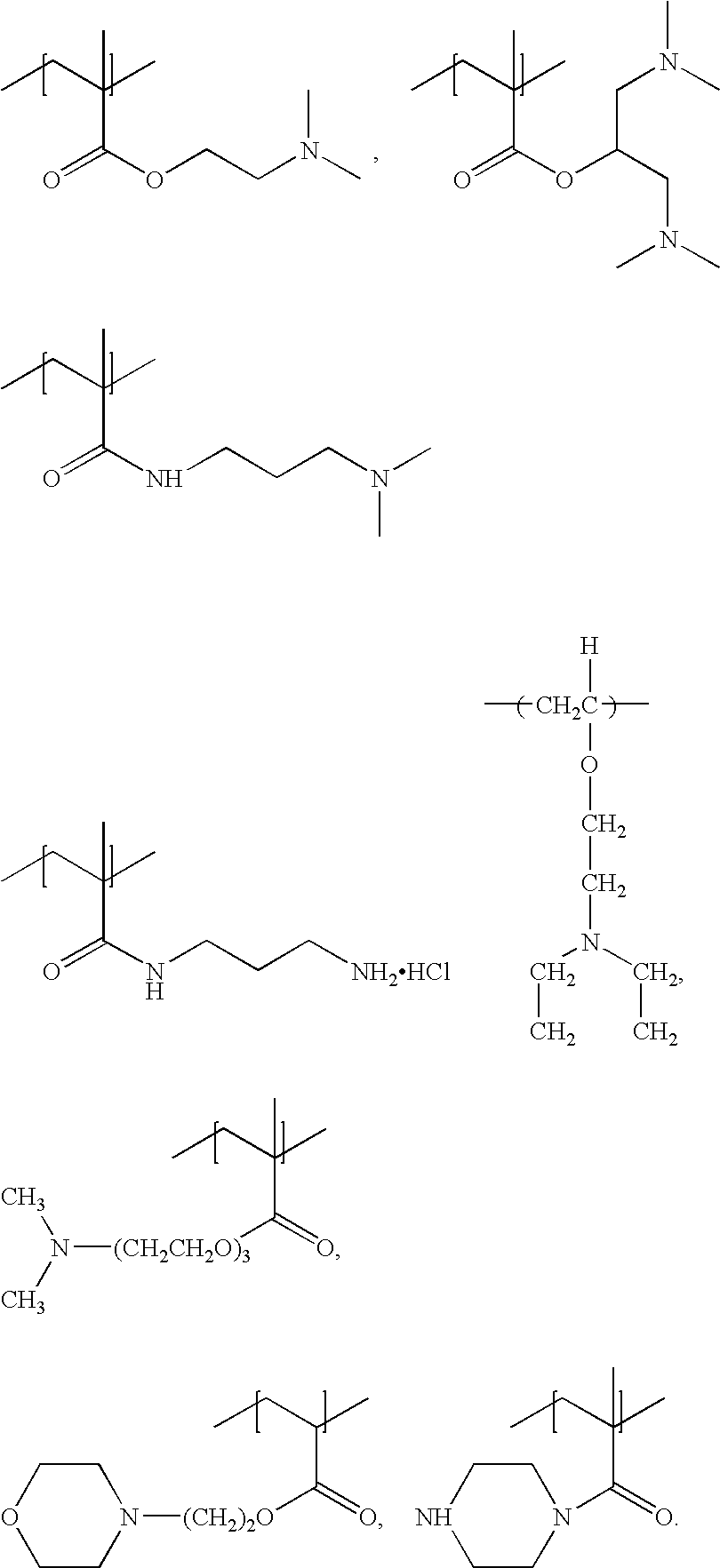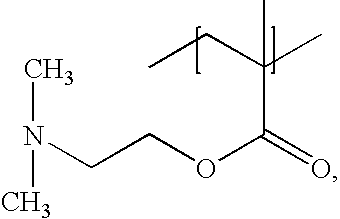Block polymers, compositions and methods of use for foams, laundry detergents, shower rinses and coagulants
a technology of block polymers and compositions, applied in the direction of organic/inorganic per-compound compounding agents, non-ionic surface active compounds, and ampholytes/electroneutral surface active compounds, can solve the problems of wasteful detergent use, consumer addition of additional detergent, and influence on the efficacy of liquid detergents, etc., to achieve the effect of prolonging the suds volume and duration
- Summary
- Abstract
- Description
- Claims
- Application Information
AI Technical Summary
Benefits of technology
Problems solved by technology
Method used
Image
Examples
second embodiment
In a second embodiment, water and acid are fed first to the reactor. Then, water-free tertiary amino-containing monomer, water-free vinyl-functional monomer and initiator are separately fed to the reactor to admix with the acid and water in the reactor. In the reactor, the monomers polymerize in the presence of the initiator described above.
Generally, the water is provided with acid and initiator. The polymerization mixture is maintained at the above-described polymerization conditions to form the copolymer product. Then the copolymer product is recovered. If desired, the tertiary amino-containing monomer, the vinyl-functional monomer, and the initiator are separately, yet simultaneously fed to the reactor.
In a third embodiment the process may be the same as the second embodiment except that the water-free monomers are mixed to form a water-free mixture prior to being fed to the reactor.
The present invention is further illustrated by the following examples of block polymeric enhanci...
synthesis examples
Example 1
Process for Making Poly(DMAM-b-HEA)—Lithium diisopropylamide (5.6 mL, 11.12 mmol, 2.0 M), lithium chloride (2.35 g, 55.58 mmol) and THF (500 mL) are cooled to −78° C. 2-(Dimethylamino)ethyl methacrylate (25.16 g, 0.16 mol) is added to the solution and allowed to polymerize for 2 h. At this time, 2-hydroxyethyl methacrylate (62.47 g, 0.48 mol) is added to the reaction mixture. The reaction is stirred for an additional 2 h. The polymerization is quenched with methanol. Poly(DMAM-b-HEA) is isolated by removing the solvent by rotary evaporation.
example 2
Process for Making Poly(DMAM-b-HEA)—The procedure of Example 1 is repeated with the substitution of (diphenylmethyl)lithium for lithium diisopropylamide.
PUM
| Property | Measurement | Unit |
|---|---|---|
| Temperature | aaaaa | aaaaa |
| Fraction | aaaaa | aaaaa |
| Mass | aaaaa | aaaaa |
Abstract
Description
Claims
Application Information
 Login to View More
Login to View More - R&D
- Intellectual Property
- Life Sciences
- Materials
- Tech Scout
- Unparalleled Data Quality
- Higher Quality Content
- 60% Fewer Hallucinations
Browse by: Latest US Patents, China's latest patents, Technical Efficacy Thesaurus, Application Domain, Technology Topic, Popular Technical Reports.
© 2025 PatSnap. All rights reserved.Legal|Privacy policy|Modern Slavery Act Transparency Statement|Sitemap|About US| Contact US: help@patsnap.com



